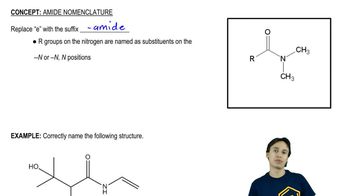What compounds are formed from the reaction of benzoyl chloride with the following reagents?
g. excess benzylamine
h. 4-chlorophenol
 Verified step by step guidance
Verified step by step guidance Verified video answer for a similar problem:
Verified video answer for a similar problem:



 9:32m
9:32mMaster NAS - The Three Rules with a bite sized video explanation from Johnny
Start learning